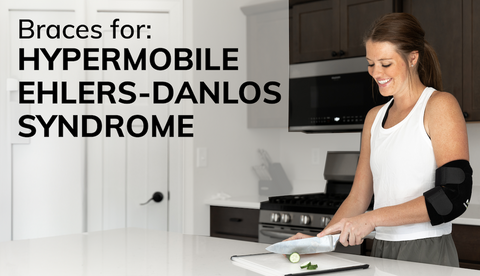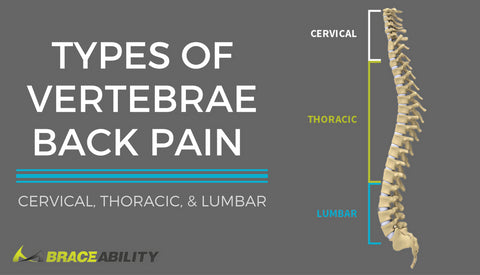7 Tips to Lose Weight and Relieve Joint Pain
There are many ways to help relieve weight-bearing joint or chronic pain caused by obesity. Different things may work for different people, so it's important to find what works for you personally, and stick with it. Lucky for you, we put together these quick and easy-to-follow weight loss tips to help you find what will work best to get rid of achy joint pain for good!
How Is Excess Weight Damaging My Joints?
One of the most common problems among those who are overweight is the impact that excess weight and pressure on joints can have. Obesity can lead to pain in your knees, back, hips, or other weight-bearing joints. This annoying pain may cause inflammation, soreness, and irritability to occur as well. Unsure if you are considered overweight or obese? Try out our easy to use BMI calculator for quick answers, without any math necessary.
If you are wondering how you can best avoid the pain of excess weight, keep reading for the top tips and tricks to avoid or minimize the discomfort you’re feeling.
-
Set Realistic Weight Loss Goals
There is no one set amount of weight loss that everyone needs to meet to notice a difference, and overdoing it can cause injuries that worsen existing symptoms. Overdoing things like running long distances, repetitive motions (even as simple as typing), and weight lifting can cause injury to your joints and increase pain.
So, what are considered realistic weight loss goals? Most health care professionals agree that a weight loss goal should not exceed 1-2 pounds per week to prevent water retention and muscle loss. Most people can make lifestyle changes without too much difficulty. However, you'll find that sometimes weight loss programs will need to be adjusted, especially if you're at risk for serious health problems such as diabetes or high blood pressure.
-
Find Your Ideal Diet Strategy
A large part of losing weight is controlling what you are eating. A diet change can be one of the hardest things about the weight loss process, yet one of the most effective. The best way to reduce the pain and inflammation caused by your weight, although easier said than done, is to eat less and exercise more. A lack of activity coupled with a high-calorie diet will make your weight-bearing joints sore and inflamed. The problem is, people rush into a diet without really being ready for it. So, before you jump into anything, take the time to make the small changes and gradually work your way into a clean diet.
Here are some simple tips for improving your eating habits:
- Make sure you get plenty of fruits, vegetables, whole grains, lean proteins, low-fat dairy products
- Try eating lower-calorie items when ordering out or when at home
- Keep tempting foods out of sight in your house so you don't have the urge to snack on them
- Eat high-fiber foods such as fruits and vegetables, whole grains, and legumes
- Drink lots of water
- Avoid or limit alcohol
- Have regular medical check-ins

-
Take The Time to Stretch
Yes, stretching. You may be thinking, really how is this going to help me lose weight? Or get rid of my aching joints, knee and back pain? However, you’d be surprised how taking the time to stretch daily can affect your pain. When you’re dealing with joint pain, you may be more inclined to want to stay still, moving as little as possible to avoid the pain. Unfortunately, this can make aching joints even worse. Getting into the habit of a daily stretching routine is a great way to relieve pain and increase your flexibility. Check in with your doctor to find the best stretching routine for your pain.
-
Get a Workout Buddy
Working on losing weight requires a lifestyle change, commitment, time and a whole lot of strength. There is absolutely no shame in seeking extra help in order to ensure success (and keep yourself sane) throughout your journey.
Support comes in many forms, but one of the best is assuring you have someone reliable there to hold you accountable. Find yourself a workout buddy, someone who supports, encourages and assures you stay on track. This could be a friend, family member, personal trainer, co-worker, or anyone else in your life who will help you work on accountability throughout your weight-loss journey.
-
Staying Motivated is Key
The weight loss process can get lengthy, frustrating and there may be times you feel like giving up. This is why motivation is the key to success. When it comes to getting rid of weight-related joint pain, losing even a small amount of weight will help. The more work you put into changing and relieving pain, the better results you will see in return.
Stay motivated and stay consistent throughout your process and the results will follow. Do whatever you can to keep yourself motivated. This could be incentives, tracking your progress, or finding the best way to celebrate your successes. Don’t give up, and understand that even the smallest victories can be life-changing.
-
Say Goodbye to Stress & Hello to Positivity
Ah, stress. The emotional tension none of us want to deal with. Stress is not only tiresome and frustrating, but it’s also something that has the power to control our weight, pain and overall health. Work on finding the best stress-relief methods for you and make them a priority.
Try some of these stress-relieving techniques and see what works for you:
- Yoga
- Meditation
- Breathing techniques
- Exercise
- Make time for your hobby
The list of stress relievers goes on and on, but the most important thing is that you’re able to take time to breathe, and take a break from reality. Carve out time for one or more of these stress-reducing activities and make it a priority.
-
Embrace Your Brace
One of the easiest ways to prevent pain on your weight-bearing joints is to ease the pressure put on them with the extra support of a medical brace. Especially if you are dealing with a condition like osteoarthritis in your knee joints, wearing a supportive knee splint or sleeve can be a life-changer while you’re active. Sleeves, splints and braces give you active protection and support while completing any daily activities or exercise. That being said, if you are working towards losing weight, wearing a protective brace is a great way to ensure you prevent any further pain or injury from occurring. We offer a wide variety of plus-size back braces and extra-large knee supports to help assist you during your weight-loss journey and for effective day-to-day pain relief.










